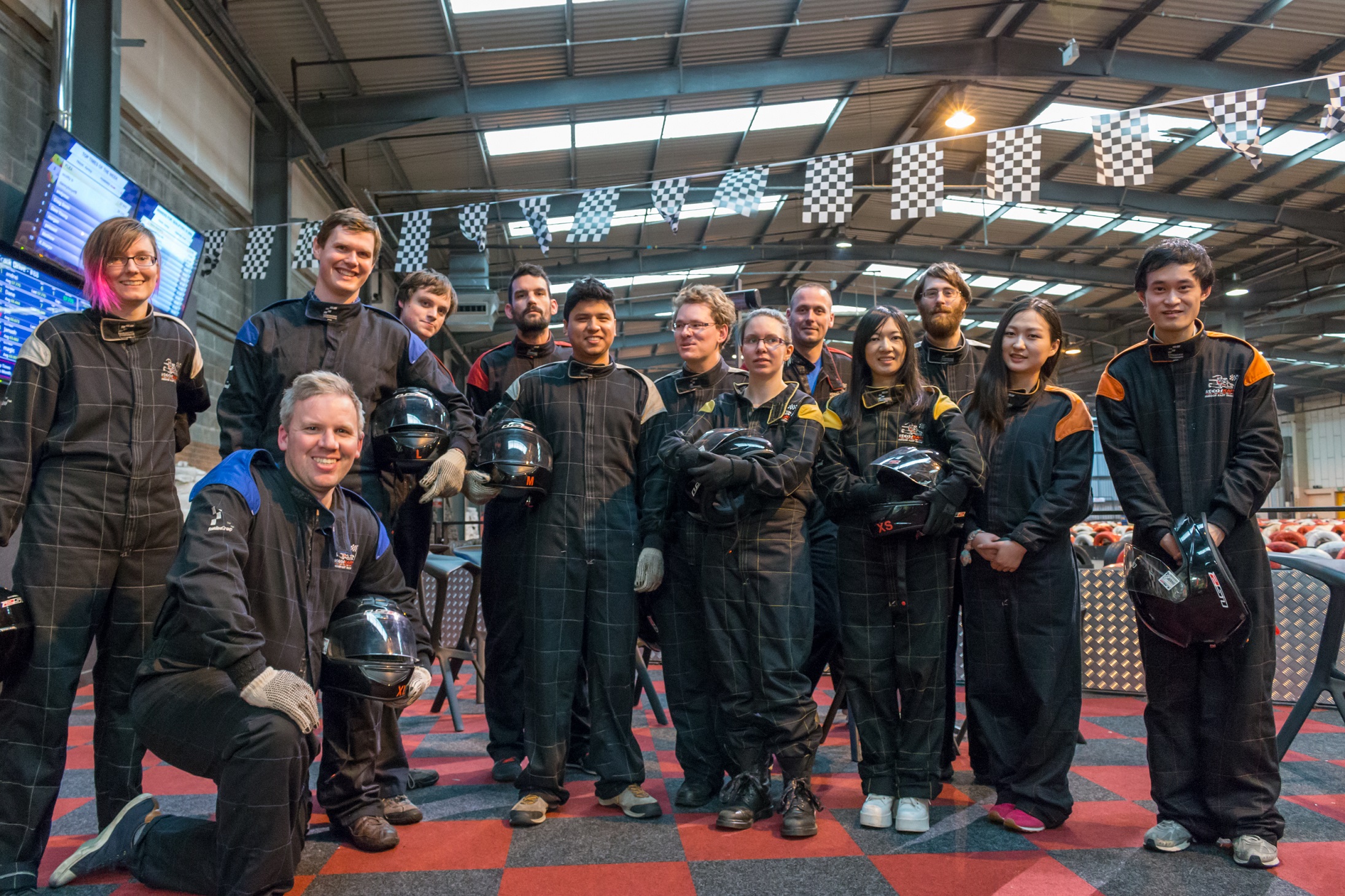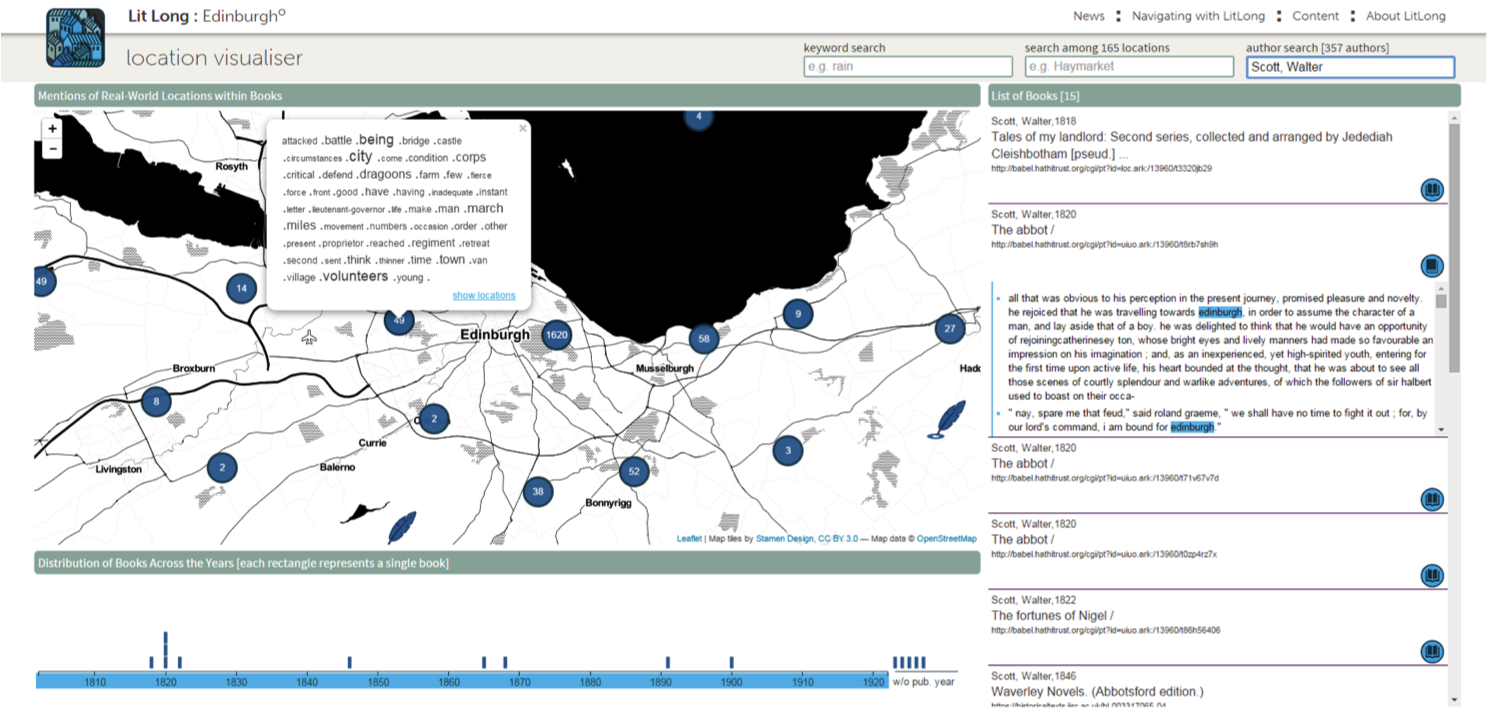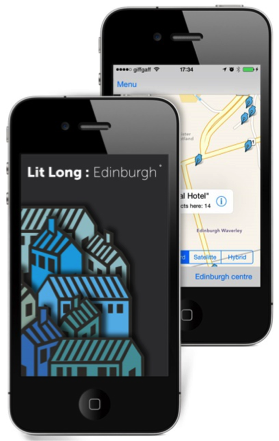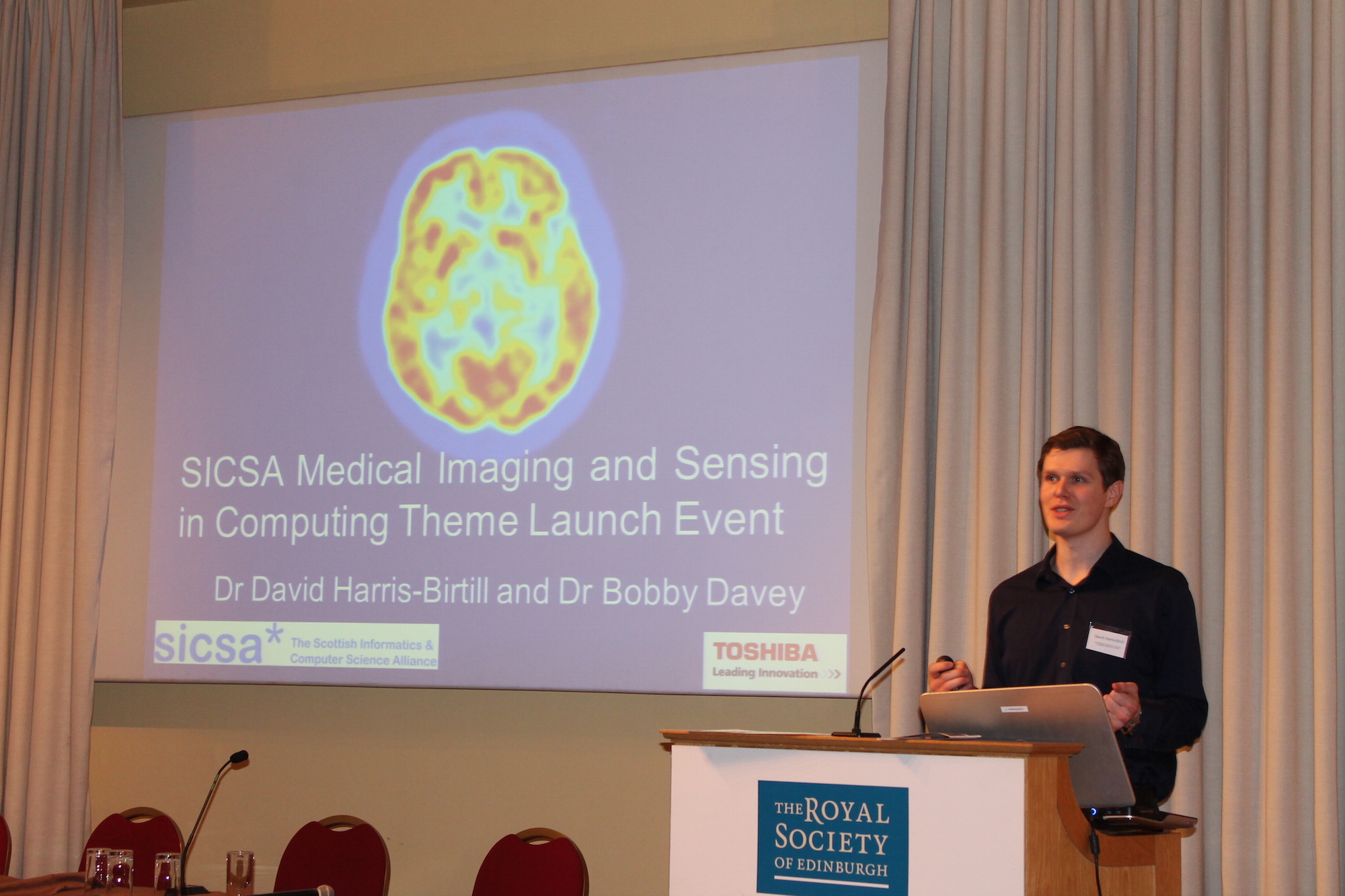This week, the University of St Andrews SACHI team, from its School of Computer Science, had a fantastic evening of go-karting at ScotKart in Dundee on Tuesday, followed by a celebratory dinner at the Duke pub to refuel on awesome burgers.
The SACHI team trophy was appropriately 3D printed by hand by Miguel Nacenta, and is set to become a team heirloom for events to come. On the track, the team demonstrated that their skills in human-machine interaction are just as good as their expertise in human-computer interaction!
 MORE
MORE
News
We are proud to announce that Dr David Harris-Birtill, leader of the SICSA Medical Imaging theme, is an invited speaker at the Collaboration Technologies and Systems conference (CTS 2015), held in Atlanta, Georgia from 1st – 5th June 2015.
He will be presenting a tutorial entitled ‘Improving patient care: zero-touch technologies in the clinical environment’ on Monday 1st June, which will explore the potential for remote sensing, interactive, and collaborative computational tools for the clinical environment.
The tutorial will discuss how zero-touch devices can improve interaction in surgical settings and how camera-based technology can be utilised in the clinic to monitor vital signs, speed diagnosis and improve the patient experience. It will cover an overview of how computation is used in the clinic, explaining the technologies used, the clinical workflow and how current scientific research can lead to future improvements in patient care.
The tutorial will also use a worked example, highlighting the uses of the Microsoft Kinect to discuss this technology’s potential, demonstrating how it can be used to collaboratively control selection of medical images in a surgical environment, showcasing its potential to monitor the patient’s heart rate and blood oxygenation level before, during, and after treatment.
Dr Harris-Birtill’s tutorial will cover the following topics:
- Background and history of technology in medicine.
- State of the art technology in healthcare, including collaborative and embedded systems.
- Worked example of gesture-based control, and monitoring of patients using the Microsoft Kinect and related technologies.
Once again, members of SACHI are presenting a number of papers and other works at this year’s CHI in Seoul, South Korea. The schedule below will allow you to see a sample of the Human-Computer Interaction research from the University of St Andrews.
Paper (Best paper): VelociTap: Investigating Fast Mobile Text Entry using Sentence-Based Decoding of Touchscreen Keyboard Input [ACM DL]
Session: How Fast Can you Type on your Phone?
When: Monday 16.30-17.50
Where: 402
Teaser Video
Paper: Performance and User Experience of Touchscreen and Gesture Keyboards in a Lab Setting and in the Wild [ACM DL]
Session: How Fast Can you Type on your Phone?
When: Monday 16.30-17.50
Where: 402
Paper: MultiFi: Multi Fidelity Interaction with Displays on and Around the Body [ACM DL]
Session: Multi-Device Interaction
When: Thursday 14.30-15.50
Where: 401
Teaser Video (download paper and other files here)
AltCHI Paper: The Broken Dream of Pervasive Sentient Ambient Calm Invisible Ubiquitous Computing [ACM DL]
Session: Augmentation
When: Monday 11.30-12.50
Where: 308
Teaser Video
Furthermore, Miguel Nacenta is on the subcommittee for Interaction Using Specific Capabilities or Modalities, and Uta Hinrichs is on the subcommittee for Design. Per Ola Kristensson, who is now an honorary associate and external member of SACHI, is on the subcommittee for Interaction Techniques and Devices, whilst also being co-organiser of the two workshops below.
Workshop: Text Entry on the Edge
When: Saturday 08.00-17.00
Where: 325
Workshop Link
Workshop: Principles, techniques and perspectives on optimization and HCI.
When: Sunday 08.00-17.00
Where: 324
Workshop Link
Members of SACHI also contributed to the Scottish HCI welcome party supported by the SICSA HCI theme which was a great success. Last but not least, Aaron Quigley is one of the conference session chairs while Shyam Reyal will be a Student Volunteer throughout the conference at this year’s CHI.
SICSA members at the Scottish HCI party
The Palimpsest project involving the University of St Andrews’ SACHI team, collaborating with the University of Edinburgh’s English literature and text-mining group, has now completed its LitLong Edinburgh application and website, which are launched today (30th March 2015).


Lit Long: Edinburgh features a range of maps and accessible visualisations, which enable users to interact with Edinburgh’s literature in a variety of ways, exploring the spatial relations of the literary city at particular times in its history, in the works of particular authors, or across different eras, genres and writers. Lit Long: Edinburgh makes a major contribution to our knowledge of the Edinburgh literary cityscape, with potential to shape the experience and understanding of critics and editors, residents and visitors, readers and writers.
Give the web visualisation a try here.
SACHI’s Dr Uta Hinrichs created the web visualisation and Dr David Harris-Birtill created the mobile app. Professor Aaron Quigley was the University of St Andrews leader and co-investigator on the Palimpsest project.
This work is also featured on the Guardian’s website and mentioned in Edinburgh University’s news.
Three exciting events from the theme have already taken place: the theme launch at the Royal Society of Edinburgh, a Masterclass in Medical Imaging and Sensing at the University of St Andrews, and a Workshop on Medical Image Analysis at the University of Dundee.
Over fifty researchers from across Scotland from industry and academia came to speak, listen and network at the SICSA Medical Imaging and Sensing Theme Launch in the Royal Society of Edinburgh on the 18th February 2015, hosted by Toshiba Medical. Speakers included: Dr Diana Morgan (Censis), Dr Jano van Hemert (Optos), Dr Ian Poole (Toshiba Medical), Dr Tom MacGillivray (CRIC Edinburgh), Prof Stephen McKenna (University of Dundee), Dr Tom Kelsey (University of St Andrews), Prof Lynne Baillie (Glasgow Caledonian University), Dr Bobby Davey (Toshiba Medical) and Dr David Harris-Birtill (University of St Andrews).
At the SICSA Masterclass in Medical Imaging and Sensing, hosted by the University of St Andrews, thirty early career researchers came to learn more about how they can apply their skills in this exciting field on the 4th March 2015. Speakers included: Prof Manuel Trucco (University of Dundee), Dr Bobby Davey (Toshiba Medical), Dr David Harris-Birtill (University of St Andrews) and Dr Neil Clancy (Imperial College London).
The Workshop in Medical Image Analysis, held at the University of Dundee on the 27th March 2015 was a huge success with excellent oral and poster presentations. Over forty researchers came to hear the invited talks from Prof Giovanni Montana (Kings College London) and Prof David Wyper (SINAPSE) as well as the other excellent research talks.
We look forward to future events within the theme. If you are interested in hosting an event within the theme please email theme leader Dr David Harris-Birtill (dcchb@st-andrews.ac.uk) with a short proposal.
Prof. Aaron Quigley from the University of St Andrews is giving a talk on Friday 6th March. The talk will take place in Otaniemi in the TUAS building at 14:00.
TIME
Friday 6th March, 14:00-15:00
PLACE
TUAS
TITLE
Public-displays to the left of me, head-mounted displays to the right, Here I am, stuck with the mobile phone that is you!
ABSTRACT
Displays are all around us, on and around our body, fixed and mobile, bleeding into the very fabric of our day to day lives. Displays come in many forms such as smart watches, head-mounted displays or tablets and fixed, mobile, ambient and public displays. However, we know more about the displays connected to our devices than they know about us. Displays and the devices they are connected to are largely ignorant of the context in which they sit including knowing physiological, environmental and computational state. They don’t know about the physiological differences between people, the environments they are being used in, if they are being used by one or more people.
In this talk we review a number of aspects of displays in terms of how we can model, measure, predict and adapt how people can use displays in a myriad of settings. With modeling we seek to represent the physiological differences between people and use the models to adapt and personalize designs, user interfaces. With measurement and prediction we seek to employ various computer vision and depth sensing techniques to better understand how displays are used. And with adaptation we aim to explore subtle techniques and means to support diverging input and output fidelities of display devices. The talk draws on a number of studies from recent UMAP, IUI, AVI and CHI papers.
Our ubicomp user interface is complex and constantly changing, and affords us an ever changing computational and contextual edifice. As part of this, the display elements need to be better understood as an adaptive display ecosystem rather than simply pixels.
SHORT BIO
Professor Aaron Quigley is the Chair of Human Computer Interaction in the School of Computer Science at the University of St Andrews, UK. Aaron’s research interests include surface and multi-display computing, human computer interaction, pervasive and ubiquitous computing and information visualisation. He has published over 135 internationally peer-reviewed publications including edited volumes, journal papers, book chapters, conference and workshop papers and holds 3 patents. In addition he has served on over 80 program committees and has been involved in chairing roles of over 20 international conferences and workshops including UIST, ITS, CHI, Pervasive, UbiComp, Tabletop, LoCA, UM, I-HCI, BCS HCI and MobileHCI.
Aaron Quigley has been invited to the Winter Augmented Reality Meeting 2015 as a Keynote Speaker. WARM is an interdisciplinary meeting of experts in AR and related domains running its tenth installment. WARM2015 continues the success of previous WARM events (WARM’05, WARM’07, WARM’08, WARM’09, WARM’10, WARM’11, WARM’12, WARM’13, WARM’14).
The organisers of WARM’15 note that the fields of Computer Graphics, Augmented Reality, Computer Vision and Ubiquitous Computing are synergistic. However, the overlap and interleaving contributions of each area has yet to be expressed and understood. The domain expert, focusing and on excelling in his or her field of research, is unable to see the connections. This meeting is a fertile ground to connect ideas and therefore seeks a variety of topics revolving around Augmented Reality and Ubiquitous Computing.
Aaron is currently on sabbatical in Japan conducting research and working on a book. Elements from both of these will form the basis for his keynote lecture in February 2015 at Graz University of Technology, Institute for Computer Graphics and Vision, Austria.
The title for his talk will be “Constructing Reality: Digital-Physical Scaffolding” and the abstract is,
Abstract:
Is the relationship between human and computer akin to a dance, where each moves effortlessly responding to the movements of the other? Or, are computers just agents who do our bidding, either undertaking direct actions on our behalf or proactively determining services, information and supports we may need on a moment to moment basis? Or, should computers continue to be best thought of as simple devices which we should turn over work to as Vannevar Bush said or thinking assistants to perform the routinizable work as Licklider suggests while we focus on creative thought and decision? Neither the beautiful dance, the agent nor the simple device seems to capture our current experience of human computer interaction. Technology underpins the human experience and digital technologies in the form of devices, computers and communications are weaving themselves into the fabric of existence. The nature of this weaving is far from uniform, distributed or even fair. For some, the impact of digital technologies are far removed from their day to day life and serve only to support some of the infrastructure of where they live, if at all. For others, digital technologies form part of the substrate of their existence and living without their mobile phone, social media apps and streaming music service seems unimaginable. Between these extremes are broad swathes of the global population who rely on digital technologies for the infrastructure in their areas and services delivered to their homes. Of course, our use and indeed reliance of technology is not new. Indeed, it is one of the defining characteristics of humans and society, our fashioning of tools, instruments and technologies to help shape our world and lives. In this talk I will discuss how we have already used technology to fashion and construct our present reality and explore ways we might create new scaffolds for the future such as enhancing our senses for a myriad of reasons from correction to replacement and enhancement.
This June, Honorary Professor and SACHI external faculty member Professor John Stasko delivered the capstone talk at EuroVis 2014 on The Value of Visualization…and Why Interaction Matters
EuroVis 2014: Capstone: The Value of Visualization…and Why Interaction Matters from VGTCommunity on Vimeo.
On the 19th of June, 2014, the group went out on an excursion to the Isle of May, just off the coast of Anstruther. It was the perfect time to visit, with beautiful weather all day long, and with what we were told to be a quarter of a million birds, as it was the middle of the nesting season. That was actually quite believable, as we saw entire cliff faces covered in birds nested as our ferry, the May Princess, toured round the island: there were puffins, seagulls, ducks, swans, terns – and even a few seals. We enjoyed hiking round the island and photographing the birds for close to three hours. The serene environment gave us a wonderful opportunity to step out of our offices/labs into the bright sunshine and taste the wind and sea – and to embrace the wonders of Mother Nature. As we were getting on and off the boat, we also had quite the “in the wild” experience, when the terns, who were nesting in the mini-harbour area, attacked us in droves, dive-bombing us from overhead to warn us off! We ended the day with an unforgettable meal of Fish and Chips from the famous Anstruther Fish Bar, and with smiles and happy memories! [Photo Credits: Michael Mauderer, Shyam Reyal, Article By: Martin McCaffery]
 This year Aaron Quigley was the program chair for PerDis’14 the 3rd ACM International Symposium on Pervasive Displays at the University of Copenhagen in Denmark. This year’s symposium extends the two previous successful symposia PerDis’13 in Google, Mountain View, California, USA and PerDis’12 at the University of Minho in Porto, Portugal.
This year Aaron Quigley was the program chair for PerDis’14 the 3rd ACM International Symposium on Pervasive Displays at the University of Copenhagen in Denmark. This year’s symposium extends the two previous successful symposia PerDis’13 in Google, Mountain View, California, USA and PerDis’12 at the University of Minho in Porto, Portugal.
This year we brought together researchers and practitioners from various disciplines with a common interest in the opportunities and challenges raised by the emergence of pervasive display systems as a new communication medium for public and semi-public spaces. The continued emergence of media facades, pervasive displays as art installations, 3D and in-air display, mobile and display networks gives rise to many new innovations and explorations.
Along with his role as program chair and session chair Aaron presented work on CSCT – Computer Supported Cooperative Teaching authored with Adam Buckland. The overall program included 30 papers, 4 posters, 4 demos and 3 videos which have helped lay the foundation for this emerging research community.







